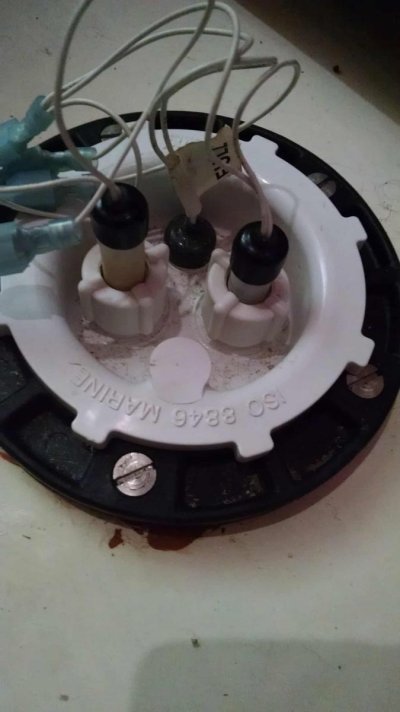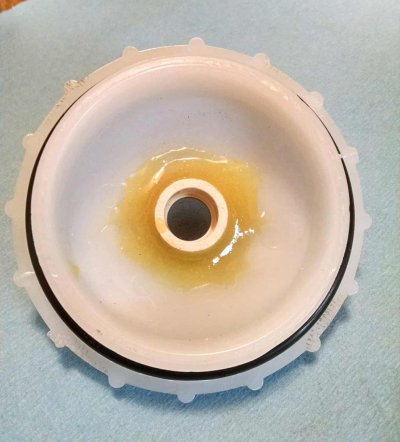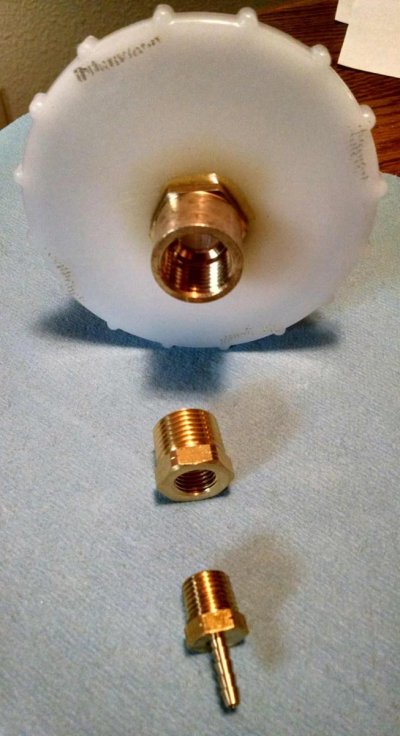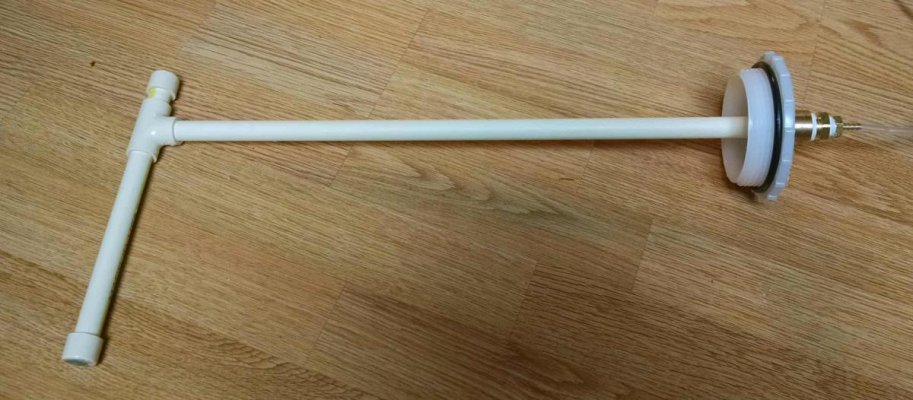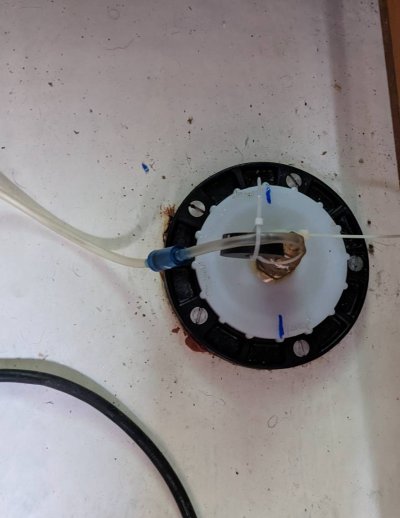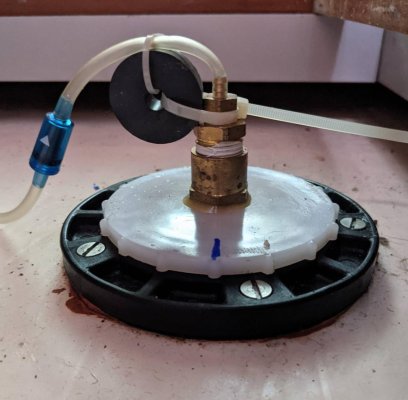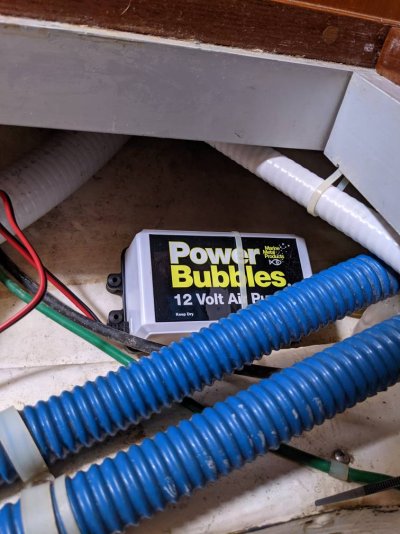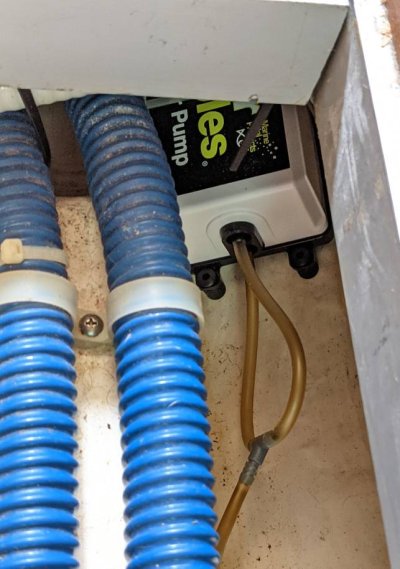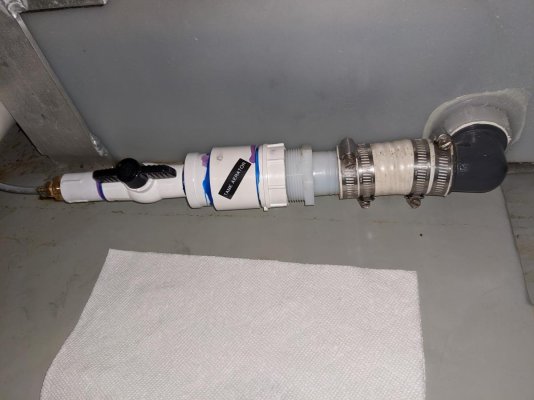dhays
Guru
- Joined
- May 26, 2015
- Messages
- 9,048
- Location
- United States
- Vessel Name
- Kinship
- Vessel Make
- North Pacific 43
Someone asked me about the holding tank bubbler that I made for the boat. I thought I would describe it here.
The concept is simple, for someone simple minded like me. The basic idea is to add oxygen in the holding tank to promote the growth of aerobic bacteria and reduce the population of anaerobic organisms. The idea is that aerobic organisms don’t stink. Anaerobic do.I got the idea originally from Don of Bacchus who helped a lot with questions.
My holding tank had a 3” round access hole in the top that was used to hold the three float sensors for my holding tank level indicators. Rather than cut another hole in the tank, I decided to use this opening for the aerator. I got a blank 3” inspection port cap and epoxied a 1/2” PVC fitting through a hole that I drilled into the cap. I then attached a brass threaded fitting into that and used reducers to attach a barbed nipple. I had to play around a lot in Home Depot to figure out the parts, but it was all pretty cheap.
I then used 1/2” PVP pipe to create a simple L shaped pipe. The idea is that it will run straight down into the tank and then run along the bottom. The end of it it was capped and small holes were drilled along its length and in the end cap. This was cemented to the cap that I made above.
To provide the air for the aerator, I bought a Marine Metal 12v bait tank aerator. It is designed for two tanks so has to air outputs and a couple of stone bubblers and 1/4” hose. It also comes with the T fitting so both air outputs can be combined into one air stream. This is what I did.
The cap and pipe assembly was fitted into the tank. The air hose from the aerator was attached to the hose barb at the top of the cap, and the 12 air pump was wired into a convenient 12v power source. I used my shower sump pump circuit.
Poor description on my part but here are the only photos that I have.
The concept is simple, for someone simple minded like me. The basic idea is to add oxygen in the holding tank to promote the growth of aerobic bacteria and reduce the population of anaerobic organisms. The idea is that aerobic organisms don’t stink. Anaerobic do.I got the idea originally from Don of Bacchus who helped a lot with questions.
My holding tank had a 3” round access hole in the top that was used to hold the three float sensors for my holding tank level indicators. Rather than cut another hole in the tank, I decided to use this opening for the aerator. I got a blank 3” inspection port cap and epoxied a 1/2” PVC fitting through a hole that I drilled into the cap. I then attached a brass threaded fitting into that and used reducers to attach a barbed nipple. I had to play around a lot in Home Depot to figure out the parts, but it was all pretty cheap.
I then used 1/2” PVP pipe to create a simple L shaped pipe. The idea is that it will run straight down into the tank and then run along the bottom. The end of it it was capped and small holes were drilled along its length and in the end cap. This was cemented to the cap that I made above.
To provide the air for the aerator, I bought a Marine Metal 12v bait tank aerator. It is designed for two tanks so has to air outputs and a couple of stone bubblers and 1/4” hose. It also comes with the T fitting so both air outputs can be combined into one air stream. This is what I did.
The cap and pipe assembly was fitted into the tank. The air hose from the aerator was attached to the hose barb at the top of the cap, and the 12 air pump was wired into a convenient 12v power source. I used my shower sump pump circuit.
Poor description on my part but here are the only photos that I have.

